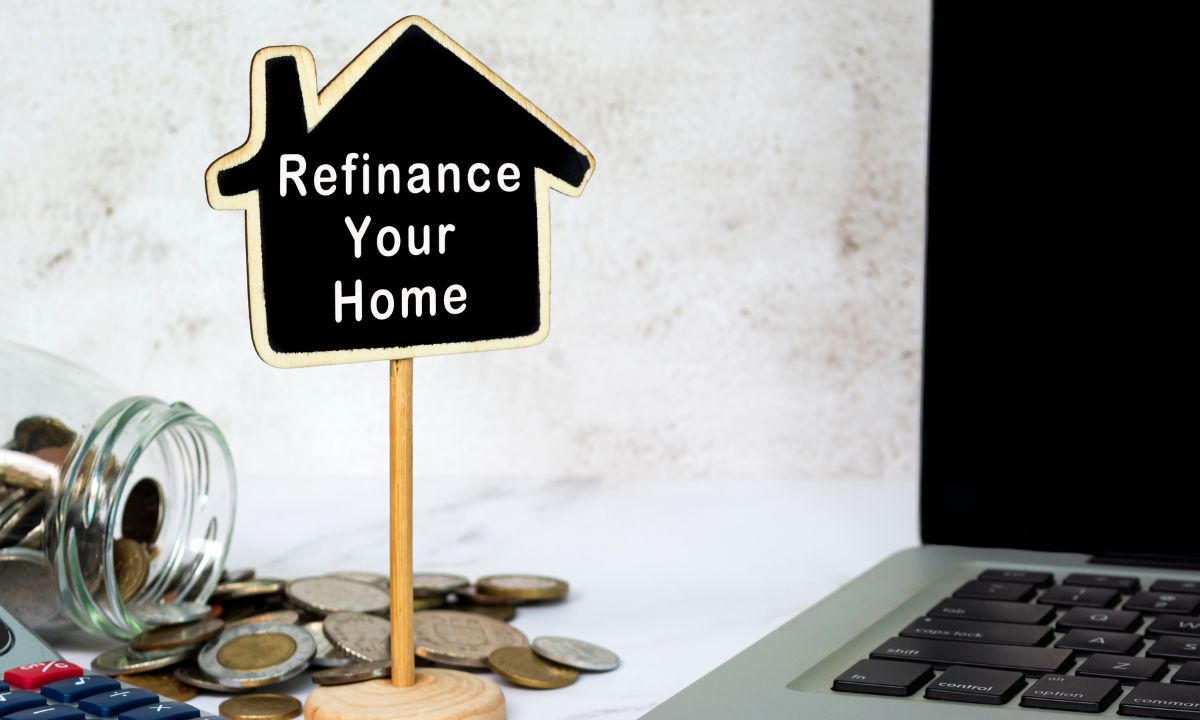Exploring 5 Types of Refinance Loans
 Refinancing your mortgage can be a smart financial move, offering potential savings, access to cash, or improved loan terms. With various refinancing options available, it’s essential to understand what each type entails to make an informed decision. Let’s look into five popular types of refinance loans: Rate and Term Refinance, Cash-Out Refinance, Cash-In Refinance, Home Affordable Refinance Program (HARP), and Short Refinance.
Refinancing your mortgage can be a smart financial move, offering potential savings, access to cash, or improved loan terms. With various refinancing options available, it’s essential to understand what each type entails to make an informed decision. Let’s look into five popular types of refinance loans: Rate and Term Refinance, Cash-Out Refinance, Cash-In Refinance, Home Affordable Refinance Program (HARP), and Short Refinance.
1. Rate and Term Refinance
What is it? A Rate and Term Refinance allows you to change the interest rate, loan term, or both without altering the loan amount.
Benefits:
- Lower Interest Rates: Securing a lower interest rate can reduce monthly payments and save on interest over the life of the loan.
- Shorter Loan Term: Switching to a shorter loan term can help you pay off your mortgage faster, though it may increase monthly payments.
- Stabilized Payments: Refinancing from an adjustable-rate mortgage (ARM) to a fixed-rate mortgage can provide predictable payments.
Considerations:
- Closing Costs: Be prepared for closing costs, which can be significant, though sometimes these can be rolled into the loan amount.
- Break-Even Point: Calculate how long it will take to recoup the closing costs with your monthly savings to ensure it’s worth it.
2. Cash-Out Refinance
What is it? A Cash-Out Refinance replaces your existing mortgage with a new, larger loan, providing you with the difference in cash.
Benefits:
- Access to Cash: Use the extra cash for home improvements, debt consolidation, or other financial needs.
- Potential Tax Deductions: Interest on the mortgage may be tax-deductible if the cash is used for home improvements.
Considerations:
- Higher Monthly Payments: Increasing the loan amount typically raises monthly payments.
- Equity Reduction: Tapping into home equity reduces the amount of ownership in your home.
- Risk of Foreclosure: If you use the cash irresponsibly, you risk foreclosure if you can’t make the higher payments.
3. Cash-In Refinance
What is it? A Cash-In Refinance involves paying a lump sum toward your mortgage to reduce the loan balance and refinance at a lower rate or better terms.
Benefits:
- Lower Loan-to-Value (LTV) Ratio: Reducing your LTV can help you qualify for better interest rates.
- Reduced Monthly Payments: Lowering the loan balance can significantly decrease monthly payments.
- Avoiding PMI: Bringing the LTV below 80% can eliminate private mortgage insurance (PMI).
Considerations:
- Upfront Cash Requirement: Requires a substantial upfront cash payment, which may not be feasible for everyone.
- Opportunity Cost: Using savings for refinancing means those funds aren’t available for other investments or emergencies.
4. Home Affordable Refinance Program (HARP)
What is it? HARP was designed to help homeowners with little or no equity refinance their mortgages to more affordable terms.
Benefits:
- Eligibility Flexibility: HARP allows refinancing for those who might not qualify for traditional refinance loans due to low equity.
- No Appraisal Needed: Often, no new appraisal is required, simplifying the process.
- Reduced Fees: Lower closing costs and fees compared to conventional refinancing options.
Considerations:
- Program Ended: HARP ended in 2018, but similar options like Fannie Mae’s High LTV Refinance Option are available.
- Eligibility Requirements: Specific criteria must be met, including the loan being owned by Fannie Mae or Freddie Mac.
5. Short Refinance
What is it? A Short Refinance occurs when a lender agrees to pay off your existing mortgage and replace it with a new, more affordable loan, often as part of a foreclosure prevention strategy.
Benefits:
- Avoiding Foreclosure: Helps struggling homeowners avoid foreclosure by obtaining more manageable loan terms.
- Debt Reduction: This can significantly reduce the principal balance, easing financial strain.
Considerations:
- Credit Impact: This may negatively impact your credit score, similar to a short sale or loan modification.
- Lender Approval: Requires lender agreement, which can be challenging to obtain.
Refinancing your mortgage can be a powerful tool for achieving financial flexibility, whether you aim to lower your interest rate, access home equity, or avoid foreclosure. Understanding the difference between each refinancing option—Rate and Term Refinance, Cash-Out Refinance, Cash-In Refinance, Home Affordable Refinance Program (HARP), and Short Refinance—enables you to make the best decision for your financial situation. By carefully weighing the benefits and considerations of each type, you can choose the path that best aligns with your long-term financial goals and current needs.
Categories
- Around The Home
- Awards
- Bankruptcy History
- Budget
- Chapter 7 Bankruptcy
- Construction Loan
- Credit
- Credit Scoring
- Environmental Awareness
- Escrow Tips
- Fair Housing
- Federal Reserve
- FHFA
- Financial Crisis
- Financial Fraud
- Financial Reports
- Foreclosure
- Holiday Tips
- Holidays
- Home Building Tips
- Home Buyer Tips
- Home Buying Tips
- Home Care
- Home Care Tips
- Home Decorating
- Home Financing Tips
- Home Maintenance
- Home Mortgage
- Home Mortgage
- Home Mortgage Tips
- Home Mortgages
- Home Seller Tips
- Home Selling Tips
- Home Tips
- Home Values
- Home Values
- Homebuyer Tips
- Homeowner Tips
- Housing Analysis
- Housing Market
- Investment Properties
- Market Outlook
- Mortagage Tips
- Mortgage
- Mortgage Application
- Mortgage Guidelines
- Mortgage Rates
- Mortgage Tips
- mortgage-rates-whats-ahead-september-17-2012
- Organization Tips
- Personal Development
- Personal Finance
- Rankings
- Real Estate
- Real Estate Definitions
- Real Estate Tips
- Real Estate Trends
- Selling Your Home
- Student Loans
- Tax Debts
- Taxes
- The Economy
- Travel
- Uncategorized